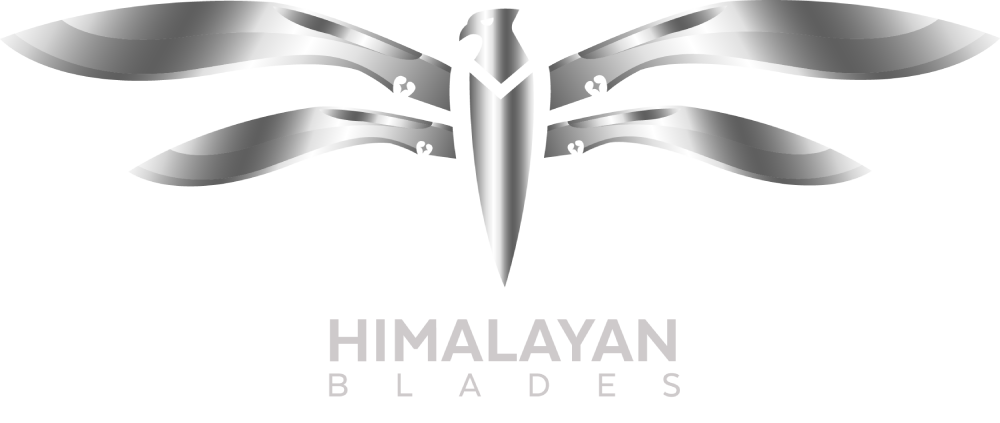The story of the Gurkhas of the 66th is a story of survival, change and finally glory. Starting with a company raised in a troubled time to being one of the most prestigious regiments of the British Indian Army, their history is filled with courage and tradition. At the core of the Gurkha is the iconic Gurkha knife – more accurately the Gurkha kukri knife – a weapon that embodies the bravery and culture of the Gurkha soldier.
At Himalayan Blades, where we celebrate the craftsmanship and legacy of the Gurkhas through our authentic handmade kukris, it is important to take this historical journey to understand the true meaning of the Gurkha kukri knife as a timeless signature of valour. The legendary Gurkha knife, which is the Gurkha military kukri knife (not to be confused with the ghurka knife), came to symbolise the bravery and heritage of the Gurkha soldiers.
Backstory: Born from the Ashes of the Mutiny
The history of the 66th Gurkhas can be traced back to the Indian Rebellion in 1857, or the very well-named Sepoy Mutiny. After the British realised the Gurkhas from Nepal were unmatched in loyalty and fighting spirit, they created new Gurkha regiments, and the 66th stood out for their discipline and fierceness in battle.
Wherever the soldiers went, they did not just carry with them their rifles but also their eternal friend, the Gurkha military kukri knife. The kukri is much more than just a knife. It is used for more than just an everyday weapon; it is a unique survival tool that is used for cutting, cooking and close combat.
The Kukri: The Mark of Gurkha Courage
Every Gurkha soldier is trained to be able to use the Gurkha kukri knife with determination and skill. The distinctive inward curve and the razor-sharp edge of its blade make it one of the most effective close-quarter combat weapons in military history. The kukri became the symbol of the Gurkhas’ fearless fighting and relentless defence.
In the case of the 66th Gurkhas, the kukri was more than just steel; it was a mark of honour that they carried with each company command on every day of the campaign, in mountain passes and in jungles alike. The Gurkha knife eventually became an icon recognised all over the world for their fighting prowess and also for their cultural pride.
Rise to Glory
As the decades passed, the 66th Gurkhas were involved in a number of campaigns not only throughout Asia but beyond. Their discipline, tactical ability and courage earned praise from allies and respect from enemies. Throughout their experiences in World War I when attacking or assaulting trench positions in the ENTIRETY of the war or World War II when defending combat outposts or critical points, the regiment epitomised military excellence.
In every engagement, the flash of the Gurkha military kukri knife was a symbolic reminder to the enemy of what the Gurkhas’ indefatigable spirit could bring to the battlefield.
Heritage and Contemporary Day Role
The legacy of the 66th Gurkhas lives on with modern Gurkha units that are part of the British and Indian armies. The kukri continues to form a central part of their dress and operational equipment, linking the old to modern warfare. Collectors and enthusiasts of history are still interested in acquiring real Gilty knives, given their craftsmanship and historical significance.
The regiment’s story, beginning under the confusion of the Mutiny outcomes, we can say, to its prestige, and continuing participation in wars and conflicts around the world, represents loyalty, bravery, and honour.
Honoring the Heritage: The Kukri as Representing Gurkha Bravery
At Himalayan Blades, we are proud to uphold the Gurkha legacy with the kukris that we make by hand. Every blade we grind is infused with the heart of the warriors that have served to make military history. From the battlefields of the Northwest Frontier to the elite troops of today, the kukri is a representation of courage, discipline, and loyalty.
To own an authentic Gurkha Kukri is to own a piece of history. Browse our selection today, and hold a legendary weapon as carried by the courageous soldiers of the 66th Gurkhas.






It’s a pity you don’t have a donate button! I’d definitely donate to this fantastic blog! I guess for now i’ll settle for bookmarking and adding your RSS feed to my Google account. I look forward to new updates and will share this blog with my Facebook group. Talk soon!